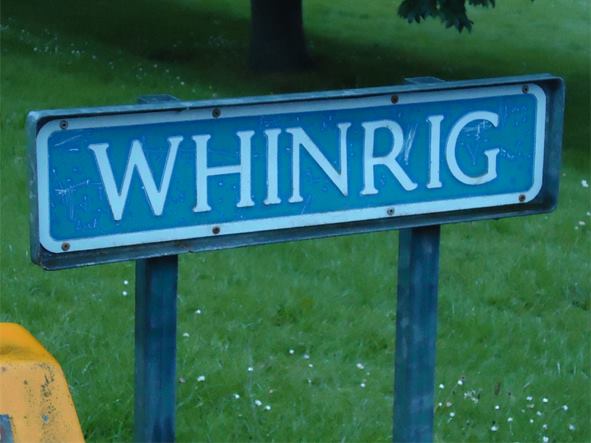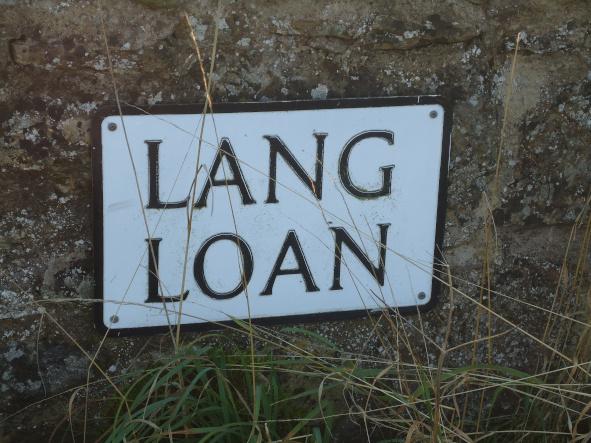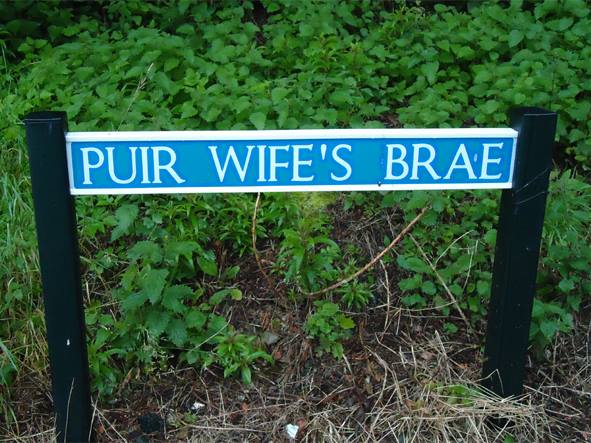Wir Ain Leed — South East Central Scots
This is the dialect on which the standard written Scots of the Universities, Court and Royal Household was based. Though, since then, some changes in pronunciation have occurred.
Consonants
Consonants usually have the same phonetic values (pronunciation) in Scots, as in Standard English. For more detail see Orthography.
In West Lothian <tw> may be realised /kw/ in words such as atween, twa, twal and twinty.
Medial and final <ch> is usually /x/ in words such as bocht, loch and nicht.
initial <ch> is usually /ʧ/, in Churnside it may be /ʃ/, in words such as chap, chield, chirl and chowk.
The cluster <nch> is usually /nʃ/ in words such as brainch, clinch, dunch, hainch, inch and French.
The trigraph <tch> is usually /ʧ/ in words such as fleetch and wratch.
The trigraph <dge> is usually /ʤ/ in words such as begrudge, cadge, cruldge and fadge.
The graphemes <g> and <g> are occasionally /ʤ/in words such as breinge and gigot.
The cluster <ld> before a word begining with a consonant is simplified to /l/ in words such as auld, bield, cauld and fauld, otherwise it is usually /ld/ in words such as elder.
The cluster <nd> is usually simplified to /n/ in words such as daunder, find, haund, saund and sindry.
The digraph <ng> is usually /ŋ/ in words such as finger, hing, ingan and single.
The digraph <nk> is usually /ŋk/ in words such as bink and hank.
The digraph <qu> is usually /kw/ in words such as acquent, quair and queen.
The digraph <sh> is usually /ʃ/ in words such as creash and sheep. That is occasionally /ʒ/ in words such as fushion and pushion.
The digraph <th> is usually /θ/ in words such as graith, thole and thrawn and /ð/ in words such as blether, thaim and thair.
The digraph <wh> is usually /ʍ/ in words such as wha, whan, wheech and wheel.
Vowels and Diphthongs
Vowels in unstressed positions are usually /ə/ in words such as aboot, the, oxter, duntit, bannock and smeddum.
The grapheme <a> is usually /a/, or /ɑ/, especially before <n(d)> and <ng>, in words such as aff, lang, mak, wash and watch. That may be /e/ in watter.
Initial <a>is /ə/ in words such as awa and ahint etc.
Final <a> is /e/, /ɑː/ or /ɔː/ , in words such as awa, twa and wha.
 Edinburgh
EdinburghInitial and medial <au> is usually /ɔː/ or /ɑː/ in words such as auld, haud, haund, saul, saund and slauchter.
Final <aw> is usually /ɔː/ or /ɑː/ in words such as aw, blaw, caw, draw, faw, gaw, gnaw, haw, slaw, snaw and staw. That occasionally occurs word initial or medial in, for example, awn, awfu, bawbee and bawsant.
Initial and medial <ai> is usually /e/ in words such as aiple, aik, ait, aith, braid, craitur, fain, gaither, graith and haimer. However, initial /e/ may be /jɪ/ in words such as aiblins, aik, ait, and aith. That may also occur after /h/ in words such as hairse (/(h)jɪ-/).
The cluster <a-e> is usually /e/ in words such as face, gate, hame and Pace. Initally that may be /jɪ/ in ale, ane and ance. That may also occur after /h/ in words such as hame and hale resulting in /(h)jɪ-/.
Final <ae> is usually /e/ in words such as adae, brae, dae, f(r)ae, gae, sae, shae, tae v., tae n. and wae. However, <ae> is /ɪ/ in words such as daes (dis), daesna (disna) and daena (dinna).
Final <ay> is usually /e/ in words such as day, gray and lay.
The digraph <ea> is usually /i/ or /e/ in some words, in words such as beast, cheap, deave, east, heap, hear, meat, ream, sea and tea.
 Duddingston, Edinburgh
Duddingston, EdinburghThe digraph <ee> is usually /i/ in words such as dee, dree, eetem, freet, jeelie, keep, meet, teeth, weel and weet.
The digraph <ei> is usually /i/ is usually beir, heid, deid, meidae, peir, spreid, teir and threid. Before /x/, <ei>, is usually /i/ in words such as dreich, heich and skeich.
The digraph <ie> is usually /i/ in words such as bield, chield, scrieve and shielin.
The grapheme <e> is usually /ɛ/ in words such as bed, ebb, esh,fecht, gled, gless, seck and wecht.
 Broxburn, West Lothian
Broxburn, West LothianThe graphic <i> is usually /ɪ/, before /l/, /kl/ and /tl/ it may be /ʌ/, in words such as drink, in, inch, licht, lift, pit, rin, simmer, sin and stibble. That may be /ʌ/ after /w/ and /ʍ/ in words such as whin, whisper, whit, wid, wind, wir, wird, wirm and wittins.
 Burdiehouse, Edinburgh
Burdiehouse, EdinburghThe graphemes <o> and <oa> are usually /o/ in words such as boat, boss, box, coal, cod, common, dochter, hoast, on, rock and thocht. To the south east before /x/ that may be /ʌux/ in words such as dochter and thocht.
The digraph <oo> is usually /u/ in words such aboot, coont, droop, hoose, moose, oot, scoor and soond.
 South Queensferry, Edinburgh
South Queensferry, EdinburghThe digraph <ou> is usually /u/ in words such allou, bouk, broun, cour, coum, doun, dout, poupit and thoum.
The cluster <u-e> is usually /u/ in words such as dule and hure.
The grapheme <u> is usually /ʌ/ in words such as bund, burn, drunken, fund, grund, truff, unce and wund.
 Bathgate, West Lothian
Bathgate, West LothianThe digraph <ui> is /jɪ/ in initial short environments in words such as uiss and /ɪ/ in medial short environments in words such as abuin, bluid, bruit, cuil, cuit, duin, fruit, guid, luif, luim, muin, schuil, spuin and Yuil. In initial long environments that is /je:/ in words such as uise and /eː/ in medial long environments in words such as abuise, buird, fluir, fuird, muir, muisic, ruise and shuir.
 Linlithgow, West Lothian
Linlithgow, West LothianThe digraph <eu> is usually /ju/ in words such as beuch, beuk, eneuch, heuk, leuch, leuk, neuk, sheuch, teuch and teug.
The digraph <ew> is usually /ju/ in words such as dew, few, new and spew.
The clusters <i-e> and <yCe> are usually /əi/ and /aɪ/ in long environments, in words such as advice, bide, bile, fine, fire, ile, rive, tyne, wise adj. and wyte.
The digraphs <ey> and <ye> are usually /əi/ in words such as cry, eyntment, eyster, fley and kye.
The digraphs <oi> and <oy> are usually /oi/ in words such as Boid, foy, noise and ploy.
 Peebles, Borders
Peebles, BordersInitial and medial <ow> is usually /ʌu/ in words such as bowt, cowp, cowt, gowd, gowf, lowp and owsen. Root final that is <owe> in words such as flowe, glowe, growe, howe, knowe, lowe, rowe and towe.
Suffixes
Strictly speaking not a suffix, <ae> is usually /e/ in words such as Americae, airae, barrae, nairae, swallae and windae.
Diminutive <ie> is usually /e/ or /ɪ/ in words such as grannie, laddie, lassie, shappie and wifie.
Adjectival <fu> is usually /fe/ or /fɪ/ in words such as awfu, carefu and mensefu.
The negative particle <na> is usually /ne/ or /nɪ/ in words such as daena (dinna), haesna, maunna, winna and wisna.
Adverbial and adjectival <y> and <ie> are usually /e/ or /ɪ/ in words such as reekie, sairy, stany and stourie.
Adverbial <ly> is usually /le/ or /lɪ/ in words such as brawly, feckly, fully, geyly, likely and uncoly.
Literature:
Wilson, James (1926) The Dialects of Central Scotland, London: Oxford University Press.
Mather, James Y. and H. H. Speitel (1986) The Linguistic Atlas of Scotland volume 3, London: Croom Helm.
Johnston, Paul (1997) "Regional variation" in Charles Jones ed. The Edinburgh History of the Scots Language, Edinburgh University Press, 443-513.
